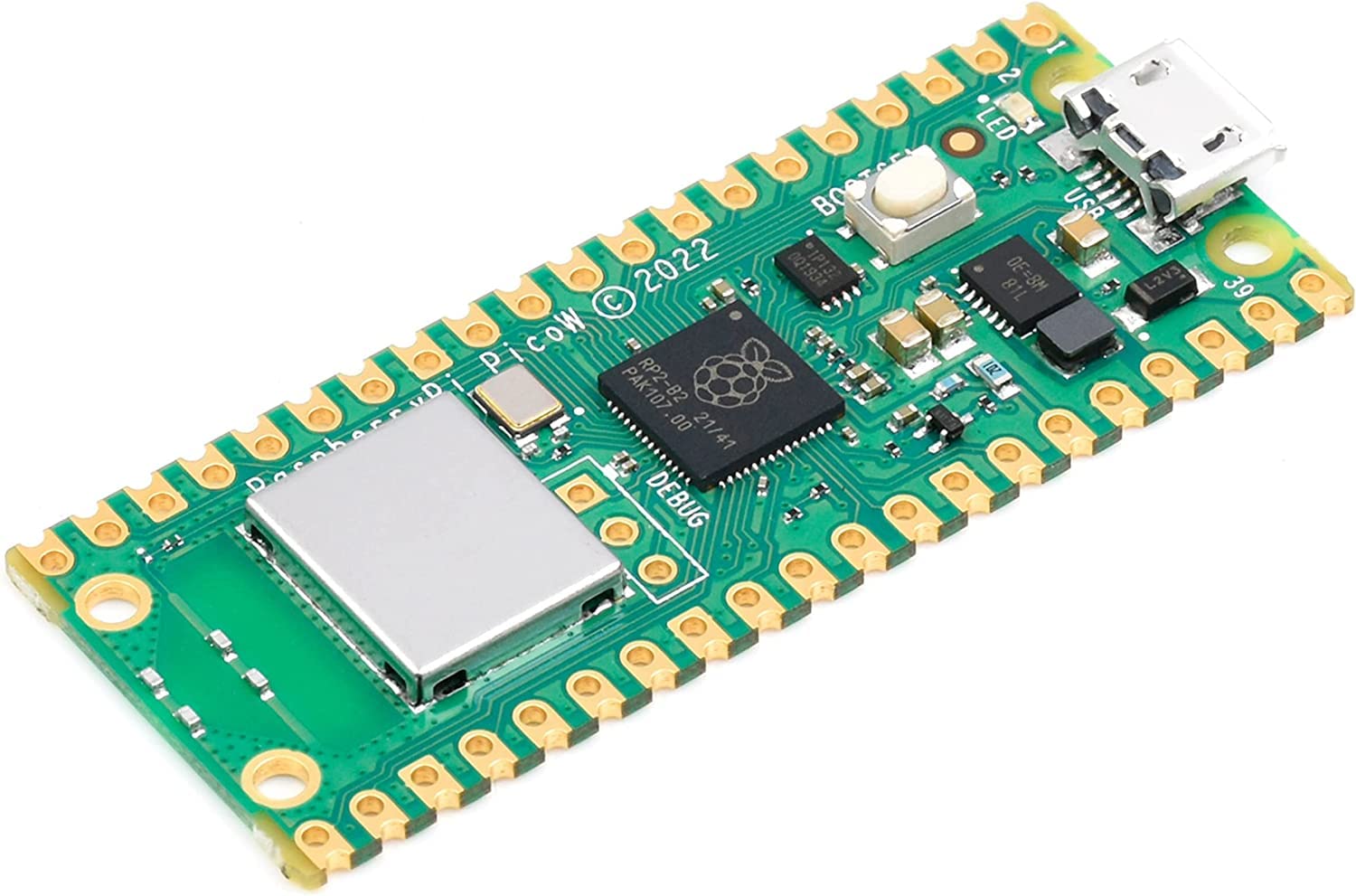Introduction
In the world of microcontrollers, two strong competitors develop: ESP32 and Raspberry Pi Pico W. Each device has unique features and capabilities, providing to a wide range of needs in the electronics and IoT worlds.
This blog post will go into detail about each platform’s strengths, weaknesses and unique characteristics, allowing you to make a well-informed choice depending on your project needs.
1. What is ESP32?
Espressif Systems developed the ESP32, a powerful microcontroller that smoothly mixes Wi-Fi and Bluetooth features with a dual-core processor clocked at 160 MHz.
Its architecture includes a dual-core Tensilica LX6 CPU, which not only increases computing capability but also allows for effective multitask across a wide range of applications, from IoT devices to robots.

2. Highlights of the ESP32
1. Dual-core CPU:
The ESP32’s dual-core Tensilica LX6 processor is a differentiating feature, enabling parallel processing and better performance, particularly in applications that require multitasking capabilities.
2. Wi-Fi and Bluetooth:
Apart from its processing power, the ESP32’s integrated Wi-Fi and Bluetooth connectivity are crucial for projects that require smooth communication with various devices and networks, making it a top choice for IoT fans.
3. Many GPIO Pins:
The ESP32 has a surprising number of GPIO pins, giving developers the freedom to connect a variety of sensors, actuators, and accessories. This surplus makes it ideal for complex projects requiring a wide range of inputs and outputs.
4. Wide Terminal Support:
The ESP32 supports a variety of communication protocols, including I2C, SPI, and UART, making it compatible with a large range of sensors and devices. Because of its flexibility, it is used in a wide range of applications.
3. What is Raspberry Pi Pico W?
Raspberry Pi Pico W is a small but powerful computer with Wi-Fi! It may be coding in Python and used for a variety of purposes, including operating robots and generating smart home gadgets. It’s a fantastic way to learn about electronics and coding that is both cheap and easy for beginners.

Key factors
1. Compact Form Factor: The Raspberry Pi Pico W maintains the compact shape of the previous generation, making it suitable for space-constrained projects. It combines combined wireless features like as Wi-Fi and Bluetooth, boosting its ease of use without compromising compactness.
2. Collaboration with RP2040: Powered by the RP2040 microprocessor, the Pico W achieves a balance between performance and efficiency. This allows for smooth connection with the Raspberry Pi network and a broad range of devices increasing its range of uses.
3. Wireless Connectivity: The Pico W supports 802.11n Wi-Fi and Bluetooth 5.2, allowing for simple and efficient wireless connectivity for IoT applications, remote control, and data sharing.
4. Ease of Use: Raspberry Pi’s user-friendly approach continues to the Pico W, which includes full documentation, software development kits, and support resources. This availability makes the development process easier for both new and experienced users, creating an ideal setting for innovation.
5. Business Use Licensing: Raspberry Pi Pico W users receive free commercial-use licenses for key software parts. This guarantees that commercial plans are flexible and compliant, reducing obstacles to entry and encouraging entrepreneurial activity.
4. Comparison between ESP32 and Raspberry Pi Pico W
When comparing the ESP32 and Raspberry Pi Pico W, it is clear that each platform has unique benefits and advantages.
1. Wireless Connectivity of ESP32 and Raspberry Pi Pico W :
- Both devices provide strong wireless connectivity choices, with the ESP32 having built-in Wi-Fi and Bluetooth features and the Raspberry Pi Pico W adding Wi-Fi and Bluetooth support to its tiny design factor.
2. Peripheral Support of ESP32 and Raspberry Pi Pico W :
- The ESP32 impresses with a wide range of devices including SPI, I2C, UART, and GPIO pins, which provide great flexibility for interacting with multiple external parts.
- The Raspberry Pi Pico W, powered by the RP2040 microprocessor, fits easily into the Raspberry Pi ecosystem and is compatible with a wide range of devices.
3. Processing Power of ESP32 and Raspberry Pi Pico W :
- With a dual-core Tensilica LX6 processor clocked at up to 240MHz, the ESP32 provides outstanding processing power, allowing for multitasking as well as effective handling of difficult tasks.
- While the Raspberry Pi Pico W balances both efficiency and performance with the RP2040 microcontroller, its processing capabilities may be compromised when compared to the ESP32.
4. Power Consumption of ESP32 and Raspberry Pi Pico W :
- With its powerful performance, the ESP32 is notable for its high energy efficiency, making it ideal for battery-powered applications.
- Similarly, the Raspberry Pi Pico W has a low power consumption profile, resulting in longer battery life for portable projects.
5. Community Support and Documentation of ESP32 and Raspberry Pi Pico W :
- Both of them take advantage of active development and fan groups, which provide full documentation, tutorials, and libraries.
- Whether you choose the ESP32 or the Raspberry Pi Pico W, you will have access to a wealth of materials to help you build.
conclusion
Therefore, both the ESP32 and Raspberry Pi Pico W provide major benefits for microcontroller projects.
The ESP32 delivers with its fast dual-core processor, broad device support, and reliable wireless networking, making it ideal for high-performance applications.
On the other hand, the Raspberry Pi Pico W’s compact size, easy interaction with the Raspberry Pi ecosystem, and built-in wireless capabilities make it suitable for space-constrained projects and IoT applications.
The decision between the two is based on project specifications such as processor power, external support, power consumption, physical factor, and ecosystem compatibility.
Both platforms have strong developer communities and full documentation offering ample assistance for project development.
Developers can choose between the ESP32 and Raspberry Pi Pico W depending on whether raw processing power or ease of integration are more important.
Linked articles
1. Home Automation using Arduino and hc-05 Bluetooth module
2. What Microcontroller Used MicroPython?
3. ESP32 with Micropython to control electrical devices using a relay
4. How AI and IoT Impact Daily Life
5. Advantages And Disadvantages Of ESP8266 Wi-Fi Module
6. Is ESP8266 better than ESP32?
7. Is ESP32 more powerful than Raspberry Pi Pico?
8. Which Is Better IOT or Cobots
9. Is Arduino Nano faster than Raspberry PI Pico





